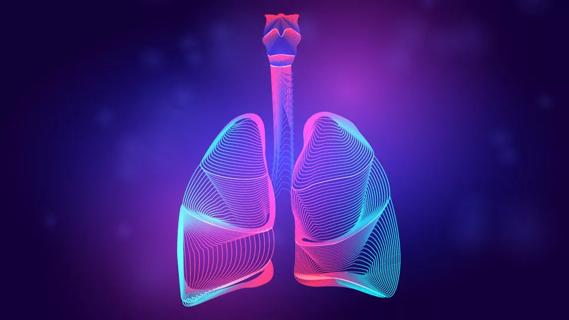RAP/PAWP ratio as predictor of survival in patients with PAH

By Adriano Tonelli, MD, and Raed Dweik, MD
Advertisement
Cleveland Clinic is a non-profit academic medical center. Advertising on our site helps support our mission. We do not endorse non-Cleveland Clinic products or services. Policy
Pulmonary arterial hypertension (PAH) is a progressive, incurable condition with poor prognosis and high rates of mortality. Common symptoms of PAH include shortness of breath, exertional syncope and reduced exercise capacity. The condition is more common in women than men with a mean age at time of presentation ranging between 45 and 65 years in western registries.
Vascular remodeling and formation of complex vascular lesions are the hallmarks of PAH. The condition is also characterized by obstruction of pulmonary vasculature and elevated pulmonary arterial pressure due to vasoconstriction, hyperplasia and hypertrophy of all three layers (intima, media and adventitia) of the small pulmonary arteries. The underlying cause of PAH is believed to be inflammatory and autoimmune in nature.
With disease progression, the increased pulmonary vascular resistance to blood flow leads to increased right atrial pressure (RAP) and right heart failure. Thus, right ventricular function is one of the prognostic factors of PAH. Traditionally, the RAP value has been used as a marker of right heart dysfunction. In patients with right heart failure, the ratio of right atrial pressure (RAP) and pulmonary artery wedge pressure (PAWP) is raised.
We hypothesized that the RAP/PAWP ratio may be used as predictor of survival in patients with PAH and that it is more predictive of survival than other hemodynamic variables. To test this hypothesis, we conducted a study analyzing two cohorts of PAH patients: Cohort 1 (N = 847) primarily included patients from multiple randomized controlled trials (RCTs) while the “real-life” Cohort 2 (N = 697) included patients prospectively enrolled in a PAH registry at Cleveland Clinic and was used as the validation cohort. The purpose of utilizing two different cohorts was to assess the reliability of the RAP/PAWP ratio when used as predictor of outcome in different clinical populations. One-year survival was used as the primary outcome measure.
Advertisement
The RAP/PAWP ratio was significantly associated with one-year survival in both cohorts. In Cohort 1, a 4.4 percent decrease in one-year survival was observed for each 0.1 increase in the RAP/PAWP ratio. The mean RAP/PAWP ratio was 1.2 with a range of values between 0 and 8.0. In Cohort 2, significant association was also observed between the RAP/PAWP ratio and one-year survival (HR 1.35, P < 0.0001). The mean RAP/PAWP ratio was 1.0 with a range of values between 0 and 7.0.
The RAP/PAWP ratio was more consistent in predicting survival across different cohorts than any of the remaining 12 hemodynamic variables analyzed in our study. Even after adjusting for age and baseline functional class, the RAP/PAWP ratio remained a reliable, statistically significant predictor of one-year survival (HR 1.27, P = 0.006). A hazard ratio between 1.00 and 1.02 was observed for all other hemodynamic variables.
The results of our study, reported in the Journal of Heart and Lung Transplantation, show that the RAP/PAWP ratio has consistent prognostic value for survival across two large PAH cohorts. These findings suggest that it is a more specific marker of right heart dysfunction than RAP or any other traditional hemodynamic variable alone.
The limitations of our study include its retrospective design and the fact that approximately 50 percent of Cohort 1 population received treprostinil as the study drug. We counteracted this latter limitation by validating the results in Cohort 2 consisting of “real-life” patients.
Advertisement
Dr. Tonelli is staff in the departments of Pulmonary Medicine, Critical Care Medicine and Pathobiology. Dr. Dweik is Interim Chair of the Respiratory Institute.
Advertisement
Advertisement

Advanced COPD care benefits from diverse medical expertise and perspectives

Pearls to reduce the strain of RSV, COVID-19 and influenza infections

Largest study examines factors affecting asthma exacerbations during and after pregnancy

Initial findings demonstrate improved symptoms and reduced steroid dependence

Findings show profound muscle loss variance between men and women

VOC analysis could provide biological insight into risk factors associated with CDI

A review of conservative, pressure-based and surgical treatments for OSA

Volatile organic compounds have potential in heart failure diagnostics